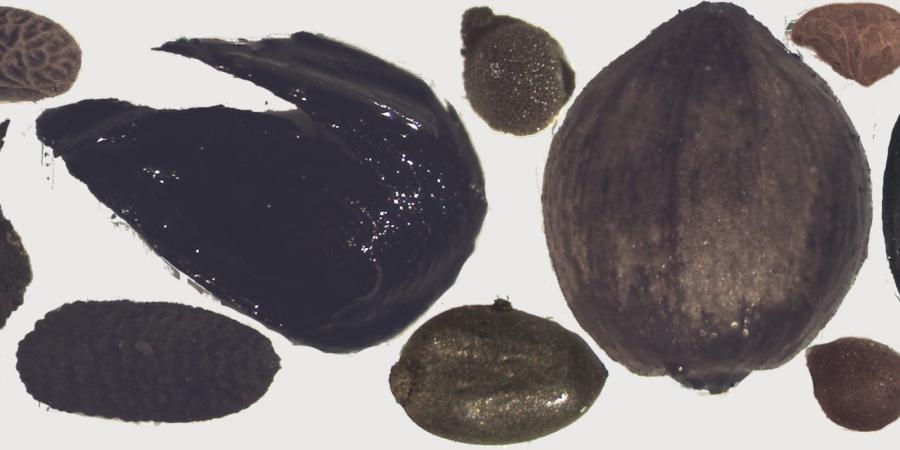Raspberries, damsons, currants, cherries, figs, strawberries, grapes, elderberries, walnuts, pears or apples and hazelnuts may have been the favoured fruits in the food and refreshment establishments in the vicinity of Bath Abbey in Georgian times, according to what we have been finding in the sediment samples from the drainage system under Bath Abbey.
Our preliminary findings, based on the study of about only 5% of the sample (the remainder of the sample is still under the microscope), suggest white pepper, coriander, cumin and mustard may have been used to season foods.
Hatched fly puparia from the sample tell us that the drain with cess was fly-blown and probably not very pleasant for the elegant passers-by visiting the Lower Assembly Rooms. The sample was also found to contain a mixture of materials possibly used as cesspit deodorisers, such as wood charcoal and cereal straw (wheat rachises).


A creamware bowl with the name ‘Henry’ painted over the glaze, similar to the Simpson’s one reported recently, was also found in the drain sample, together with fragments of lost objects such as clay tobacco pipes, buttons and pins, as well as domestic debris, such as pottery, coal, glass, bone, marine shell, fabric and other detritus, such as fired clay, metal working debris, fragments of building stone and mortar.
The study of this sample is a unique opportunity to look at health and diet in Georgian Bath, which will offer complementary information to that provided in written sources. For example, we might be able to learn through 19th-century cookery books how some of these fruits and nuts may have been used. Walnuts and other exotic products such as figs would have been only available in the form of preserves.
If you want a further taste at Georgian Bath, please follow this stylish Quatre Fruits recipe from The Lady’s Own Cookery Book and New Dinner-Table Directory; in which will be found a large collection of original recipes, including not only the result of the authoress's many years observation, experience, and research, but also the contributions of an extensive circle of acquaintance: adapted to the use of persons living in the highest style, as well as those of moderate fortune by Charlotte Campbell Bury, published and republished through the early 19th century (1844, third edition), which includes some of the most abundant plants recovered in our sample:
Quatre Fruits.
Take picked strawberries, black currants, raspberries, and the little black cherries, one pound of each, and two quarts of brandy. Infuse the whole together, and sweeten to taste. When it has stood a sufficient time, filter through a jelly-bag till the liquor is quite clear.
This work is part of the Bath Abbey Footprint Project supported by the Heritage Lottery Fund. You can follow the discoveries on twitter (@bathabbey and @wessexwest) and Facebook (#footprintproject).
By Inés López-Dóriga, Environmental Archaeologist



